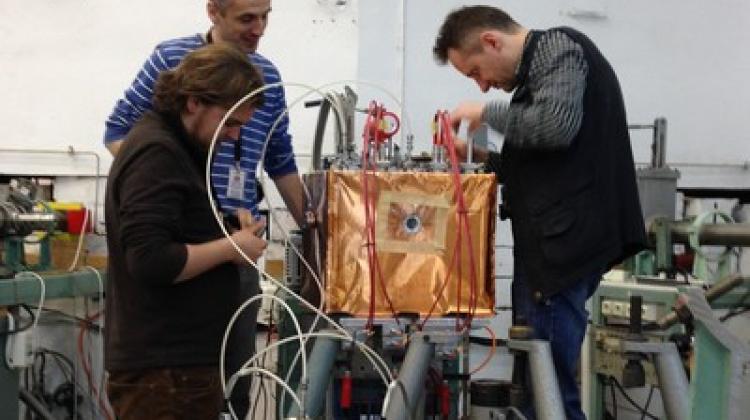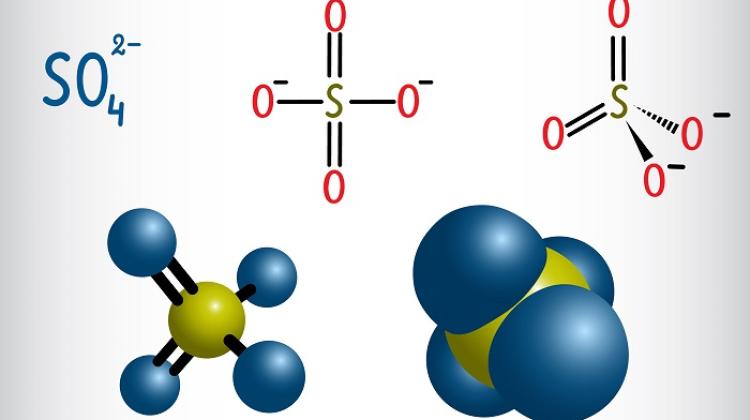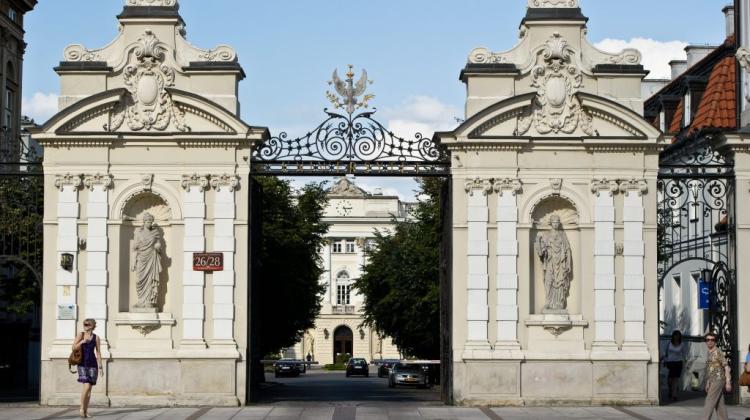Polish researchers help understand the processes occurring in stars

Polish physicists will build parts of the device that will be the most powerful laboratory source of gamma radiation. The experiment in the European research centre ELI-NP is designed, among others, to help better understand the processes occurring in stars, including those associated with the formation of oxygen - informed the University of Warsaw.
In about two years, in 2018, physicists will try to perform laboratory experiments that will increase our knowledge of, among others, astrophysical processes associated with the formation of oxygen. In nature, these processes take place inside the stars. While physicists will not be able to recreate conditions in the star in a laboratory, they have found another way to explore these processes. Part of the equipment, which will allow that, will be built by physicists from the University of Warsaw.
Oxygen is an essential element for life on Earth. It was created in thermonuclear reactions in stars, and then as a result of stellar winds and supernova explosions spread among the interstellar matter from which a few billion years ago the Sun along with Earth and the solar system formed. When a star in its interior transforms most of the hydrogen into helium, helium becomes the main "fuel" for further fusion reactions. When three nuclei of helium combine, carbon nucleus may form, and when it is joined by a another helium nucleus, nucleus of oxygen forms and gamma radiation is emitted.
"Oxygen is basically ‘ash’ of the fusion \'burning\' of carbon. But what mechanism causes carbon and oxygen to be formed in the stars always roughly in the same proportion of 6 to 10?" - wondered Dr. Chiara Mazzocchi from the Faculty of Physics, University of Warsaw.
The scientist explained that stars evolve in stages. In a first step they convert hydrogen into helium, in the second - helium into carbon, oxygen and nitrogen, in the following steps more massive elements may form. Oxygen atoms are formed in the helium combustion phase. Theoretically, the production of oxygen could occur somewhat faster. Then, when the star runs out of helium and moves to the next stage of its evolution, the proportion between the amount of carbon and oxygen would be different.
Scientists from the University of Warsaw and other institutes from the international consortium ELI-NP (Extreme Light Infrastructure - Nuclear Physics) want to study this issue. They will not produce, however, conditions found in the interior of stars, or fusion that transforms carbon into oxygen and gamma photons. Instead, they will try to observe the reverse reaction: the collision of high energy photons with a nucleus of oxygen and its decay into dioxide and helium. Good understanding of this mechanism will help improve existing theoretical models of thermonuclear fusion.
The experiment will be conducted at the ELI-NP centre in Romania. Poles will prepare an eTPC detector. The first tests of the demo version of the detector have already been completed. The main component of the detector is a chamber filled with a gas containing many oxygen nuclei (such as carbon dioxide). This gas acts as a shield, through which the beam of gamma radiation will pass. Some gamma photons will collide with the nuclei of oxygen and produce carbon and helium nuclei. The resulting particles will be electrically charged and ionise the gas. Using electric fields, detection electrodes and specialized FPGA processors, scientists want to recreate the paths of particles in space. According to predictions, it will be possible to record 70 collisions of photons with the nuclei of oxygen per day.
"For the experiment in the ELI-NP we are preparing an eTPC detector ECHR, a type of drift chamber with time projection. This detector is a modernized version of an earlier detector constructed at the Institute of Experimental Physics, Faculty of Physics, University of Warsaw, and successfully tested by our scientists during the world\'s first observation of a rare nuclear process: two-proton decay" - said Dr. Mikołaj Ćwiok from the University of Warsaw.
The project is implemented jointly with scientists from the ELI-NP / IFIN-HH centre (Magurele, Romania) and the University of Connecticut (USA). The Warsaw group, headed by Prof. Wojciech Dominik, consists of physicists and engineers from the Departments of Particles and Fundamental Interactions and Nuclear Physics, as well as students of the Faculty of Physics, University of Warsaw: Jan Stefan Bihałowicz, Jerzy Mańczak, Katarzyna Mikszuta and Piotr Podlaski.
Extreme Light Infrastructure (ELI) is a research project with a budget of 850 million euros. It is included in the European Roadmap for Research Infrastructures. In this framework, three centres will be established (in the Czech Republic, Romania and Hungary) to conduct research on the interaction of light with matter. They will use the greatest powers of photon beams, different wavelengths, and the time scales will be at attosecond, or billionths of a billionth of a second. The Romanian centre in Magurele near Bucharest works on two sources of radiation: a high-intensity radiation laser and a strong source of monochromatic gamma radiation. (PAP)
cza/ zan/ mrt/
tr. RL
Przed dodaniem komentarza prosimy o zapoznanie z Regulaminem forum serwisu Nauka w Polsce.


















